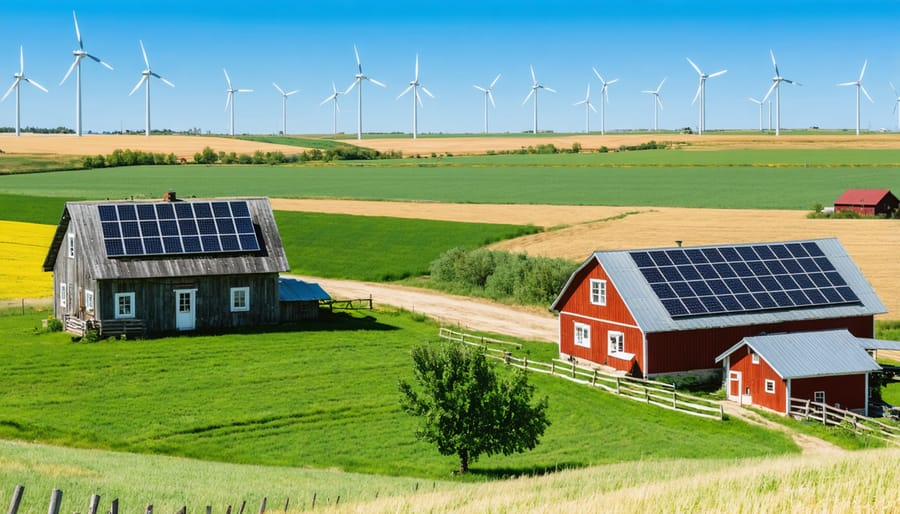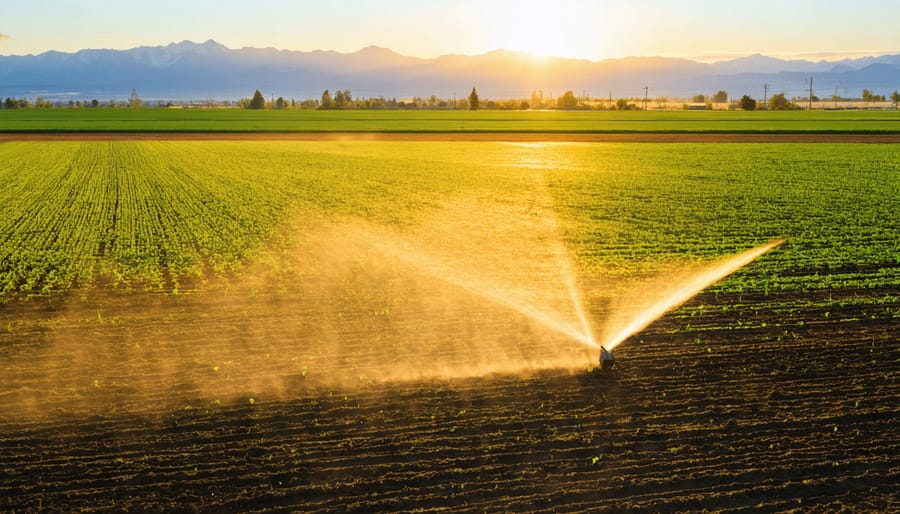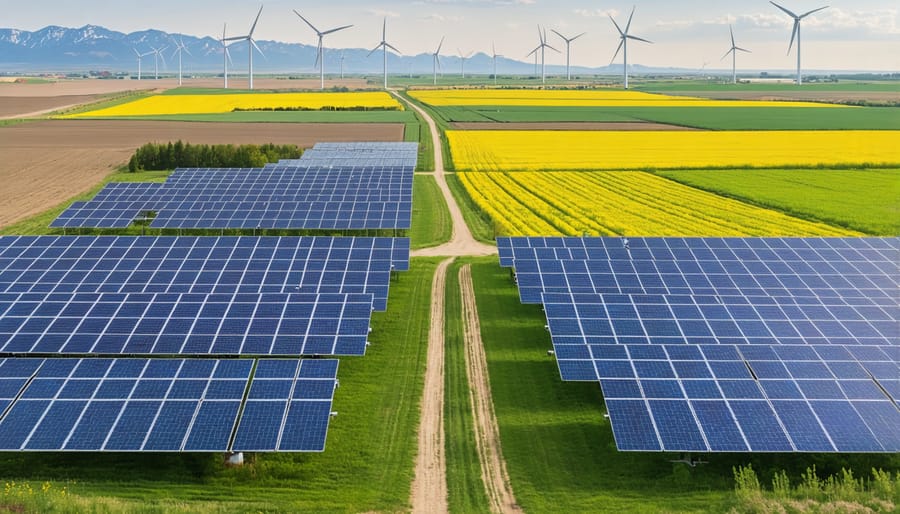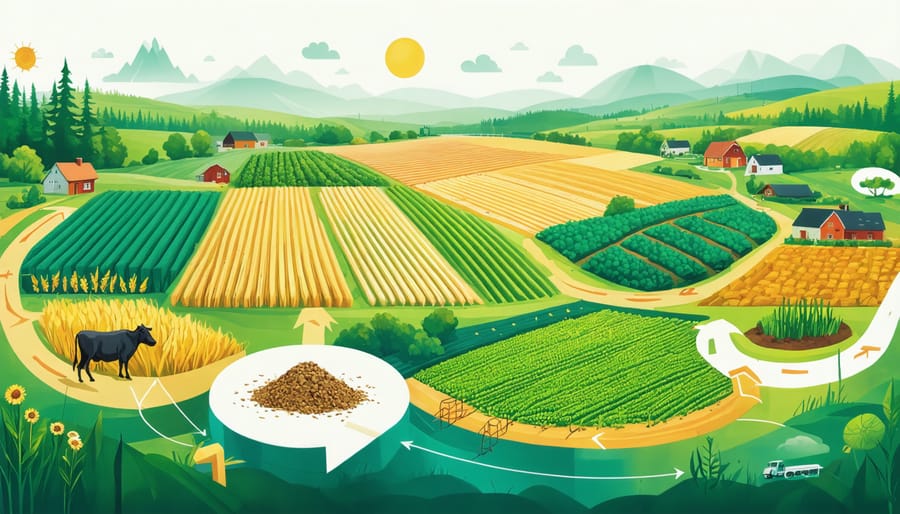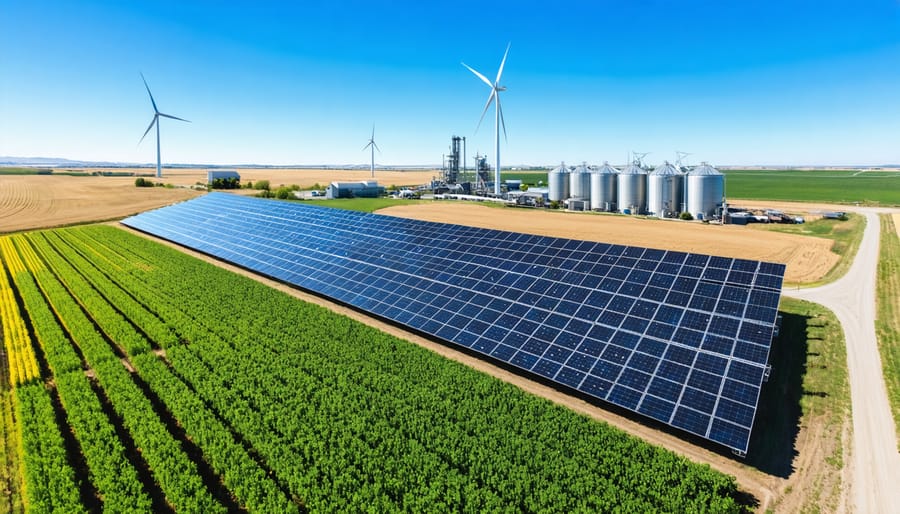In the heart of Alberta’s farming communities, a revolutionary green energy movement is taking root, transforming how rural neighborhoods power their futures. The Green Community Program, pioneered by local agricultural cooperatives, has already helped over 200 farms reduce their energy costs by an average of 40% while building stronger, more resilient communities. This innovative initiative combines solar panel installations, wind energy projects, and smart grid technologies with traditional farming practices, creating a sustainable model that’s uniquely adapted to Canada’s agricultural landscape.
By connecting farmers with renewable energy experts and providing accessible financing options, the program addresses the specific challenges faced by rural communities transitioning to sustainable energy solutions. Participants not only benefit from reduced operational costs but also contribute to a cleaner environment while maintaining their agricultural productivity. The program’s success lies in its community-first approach, where knowledge sharing and collective purchasing power make sustainable energy accessible to farms of all sizes.
Through this collaborative effort, Alberta’s farming communities are demonstrating how local action can drive meaningful environmental change while strengthening rural economies. The Green Community Program stands as a testament to the power of community-led sustainability initiatives, offering a blueprint for agricultural regions across Canada.
Building Sustainable Energy Networks in Rural Alberta
Community Solar Initiatives
Alberta’s farming communities are leading the way in community solar initiatives, demonstrating how shared renewable energy can benefit entire agricultural regions. The Starland County Solar Project stands as a prime example, where 17 local farms pooled resources to install a 2-megawatt solar array spanning 12 hectares. This collaborative effort now generates enough electricity to power 350 homes while providing participating farmers with an additional revenue stream.
In the Medicine Hat region, the Agricultural Solar Co-operative has transformed previously unused marginal land into a productive solar farm. Members report average annual savings of $3,200 on electricity costs, while maintaining their regular farming operations. The project’s innovative design allows for grazing sheep beneath the solar panels, maximizing land use efficiency.
The Vulcan Solar Partnership showcases how community-driven projects can overcome initial funding challenges. Through a combination of municipal grants, provincial incentives, and cooperative member investments, local farmers established a 1.5-megawatt installation that now serves 200 agricultural operations. The partnership structure enables smaller farms to access renewable energy benefits that would be cost-prohibitive individually.
These successful programs typically feature flexible membership options, transparent governance structures, and clear benefit-sharing arrangements. Local agricultural extension offices provide support services, including feasibility studies and technical guidance. For farmers considering joining or starting a solar sharing program, the Alberta Renewable Energy Cooperative offers free consultations and connection to existing projects in their area.

Wind Energy Cooperatives
Across Alberta’s rural landscape, wind energy cooperatives are emerging as powerful examples of community-driven sustainability. The Pincher Creek Wind Farm Cooperative, established by a group of local farmers in 2018, demonstrates how agricultural communities can successfully harness wind resources while maintaining their farming operations.
Members of the cooperative pooled their resources to install six wind turbines, generating enough electricity to power 3,000 homes annually. The project not only provides participating farmers with a steady secondary income stream but also strengthens community bonds through shared ownership and decision-making.
In the Peace Region, the Northern Lights Wind Coalition showcases another successful farmer-led initiative. Twenty-five farming families collaborated to develop a 50-megawatt wind installation, creating a model for other rural communities. Farmers report annual earnings of $15,000 to $25,000 per turbine while continuing their regular agricultural activities beneath the turbines.
The benefits extend beyond financial returns. These cooperatives create local employment opportunities, with maintenance and operational roles typically filled by community members. They also contribute to municipal tax revenues, supporting local infrastructure and services. Many cooperatives reinvest a portion of their profits into community projects, from upgrading recreational facilities to funding agricultural education programs.
For farmers considering wind energy projects, Alberta’s Rural Energy Partnership Program offers technical support and initial feasibility studies. The program connects interested farmers with experienced operators and provides guidance on regulatory requirements, helping transform individual interest into successful community ventures.
These cooperative models demonstrate how combining agricultural expertise with renewable energy can create sustainable, community-driven solutions that benefit both farmers and their local areas.

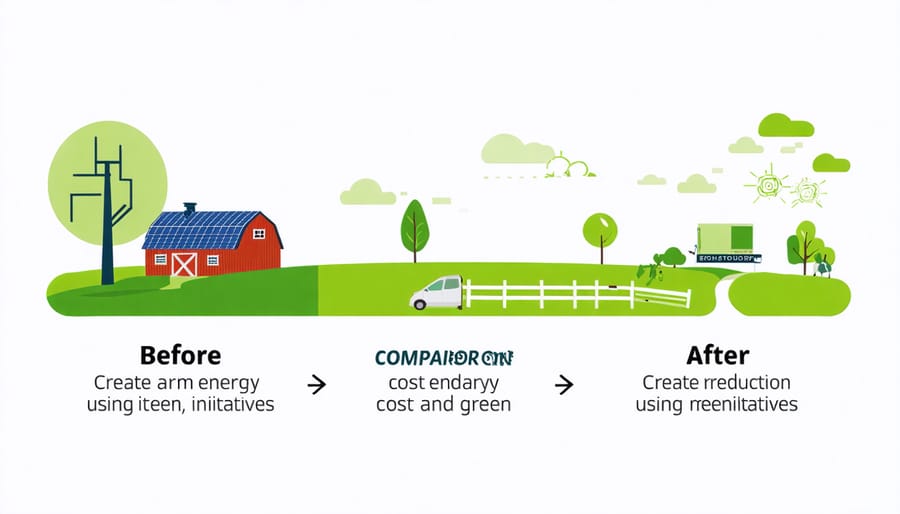
Economic Benefits for Agricultural Communities
Grant Programs and Incentives
The success of green community initiatives often hinges on accessing the right financial support. Alberta farmers can explore numerous available funding options designed to support sustainable agriculture practices. The Canadian Agricultural Partnership (CAP) offers grants ranging from $5,000 to $50,000 for implementing renewable energy solutions on farms. These funds can cover up to 50% of eligible project costs, including solar panel installation, wind energy systems, and biogas digesters.
Local agricultural societies frequently provide matching grants for community-led sustainability projects, while the Alberta Environmental Farm Plan (EFP) offers cost-sharing incentives for farmers implementing green technologies. The Farm Energy and Agri-Processing Program (FEAP) specifically supports energy efficiency upgrades, offering rebates of up to 70% on qualified improvements.
Additionally, municipal governments across Alberta have established their own green incentive programs, often providing tax breaks and direct funding for sustainable farming practices. The Rural Economic Development Initiative (REDI) grants support collaborative community projects, particularly those focusing on renewable energy implementation and sustainable resource management.
To maximize these opportunities, farmers are encouraged to work with local agricultural extension offices, which provide guidance on application processes and help identify the most suitable funding streams for specific projects.
Environmental Impact on Farm Operations
The green community program has demonstrated significant environmental benefits across participating farms in Alberta. Through collective efforts in tackling climate change, local farming operations have reduced their carbon footprint by an average of 30% within the first year of implementation.
Participating farms have reported substantial improvements in soil health through reduced tillage practices and enhanced carbon sequestration. Data collected from program participants shows that organic matter content in soil has increased by 2-3% on average, leading to better water retention and reduced irrigation needs.
The program’s renewable energy initiatives have helped farms cut their reliance on fossil fuels. Solar panel installations across participating properties now generate over 5 megawatts of clean energy annually, offsetting approximately 4,000 tonnes of CO2 emissions. Wind energy projects have further contributed to emission reductions, with several community-owned turbines providing power to local grid systems.
Water conservation efforts have yielded impressive results, with participating farms reducing water consumption by up to 40% through efficient irrigation systems and moisture monitoring technology. The implementation of riparian buffer zones has improved local watershed health and enhanced biodiversity, with several farms reporting increased wildlife activity and native plant species restoration.
These environmental achievements extend beyond individual farm boundaries, creating a ripple effect throughout the wider agricultural community. The program’s success has inspired neighbouring regions to adopt similar sustainable practices, demonstrating how local initiatives can drive broader environmental change in Canadian agriculture.
Implementation Success Stories
The Thompson Family Farm in Lethbridge County stands as a shining example of green community program success. After implementing solar panels across their 800-hectare operation in 2019, they’ve reduced their annual energy costs by 65% while creating enough surplus power to support 15 neighboring properties.
In Red Deer County, the Morrison Agricultural Cooperative transformed their traditional farming practices through a community-based biogas initiative. By collecting organic waste from 12 local farms, they now generate enough renewable energy to power their entire operation and provide heating for a nearby greenhouse complex.
The Lakeland District’s Wind Farm Coalition, comprising 25 family farms, showcases the power of collective action. Their shared investment in wind turbines has not only slashed operating costs but also created a sustainable revenue stream through Alberta’s micro-generation program.
These success stories demonstrate how green community programs strengthen local agricultural economies while advancing environmental stewardship. The participating farms report increased operational efficiency, stronger community bonds, and enhanced resilience against rising energy costs.
Green community programs offer transformative benefits for Alberta’s agricultural communities, from reduced operational costs to enhanced environmental stewardship. By participating in these initiatives, farmers can access renewable energy solutions while strengthening local economies and building more resilient communities. The success stories across our province demonstrate that sustainable practices and profitable farming go hand in hand. Whether you’re a small family farm or a large agricultural operation, there’s a place for you in this growing movement. Take the first step today by connecting with your local agricultural extension office, joining community sustainability groups, or reaching out to fellow farmers who have already embraced green initiatives. Together, we can create a more sustainable and prosperous future for Alberta’s agricultural sector while preserving our natural resources for generations to come.

